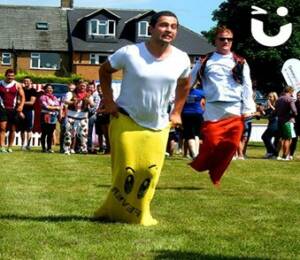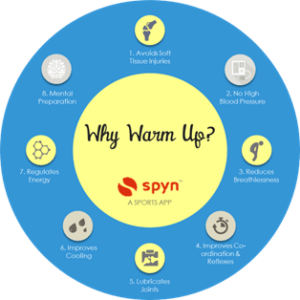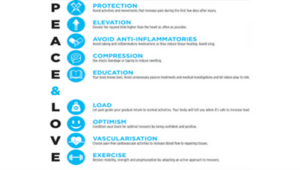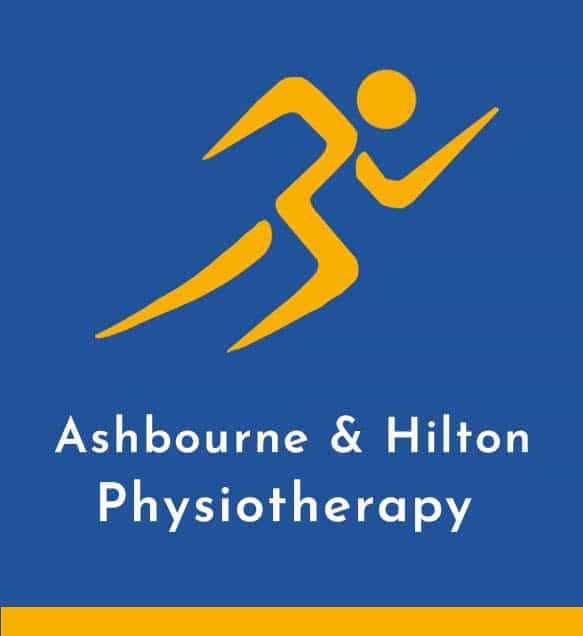In July the school Summer Term starts to draw to a close and many start to concentrate on the holidays ahead, but before that, there may be the excitement and drama of Sports Day!
How sports days have changed over the year’s and I don’t intend to dwell on the long running saga of how competitive these days should be.
As long as at the heart of things is inclusion, kindness and a real enjoyment and positive approach to physical activity, I’m all for it! I am sure that all schools have this at their core when approaching their sports day or similar end of term activities for their students, but can the same be said for the parent’s races???

Image credit: www.thefunexperts.co.uk
It can be very easy to get carried away in the moment of watching physical prowess in others, the adrenaline flowing through your veins as you cheer on your child/children and their friends in the egg and spoon, sack race, obstacle course etc and then you stir in a little nostalgia and stories from past sports days of your own and, before you know it, you’ve allowed yourself to be entered into the parents race which “of course you’re not going to take seriously”…

So,why do you find yourself quietly warming up hoping no-one will notice and cursing yourself for your choice of footwear for the day.
You think you notice a glint of pride in your young child’s eye as they hear that you’ve entered… Or is it sheer terror! of impending embarrassment?
Anyway, skip to the part where your desire to impress (and not embarrass), encourages you to push your body (not quite doing what it did when you last tried to sprint 20 years ago) a little beyond what it is currently capable of – the resulting sudden physical overload might cause an acute soft tissue injury like a torn muscle, sprained ankle, damaged knee ligament or worse, a bruised ego.
When writing this I was wondering whether it was just me….? But several of my physio clinic colleagues accepted that mine was not an isolated scenario. Even if your fitness levels are pretty good, suddenly expecting your body to perform a sprint with little or no warm up and all the extra psychological pressures/excitement can be a step too far – not sure what the statistics are on this…

Image credit: spyn.go/blog.reasonstowarmup
The last thing I want to do is vilify parent’s races as the entertainment value, camaraderie and bragging rights are all worth it, but what if an injury occurs?
How should we treat these types of injuries?
The human body has an amazing capacity to heal itself. All we need to do is give it the optimal environment to allow this to happen efficiently and effectively.
I’m sure many of you will have heard of the old acronym RICE which stands for:
-
Rest
-
Ice
-
Compression
-
Elevation

Image credit: www.verywellhealth.com
And it’s more up to date replacement PRICE which introduces Protection into the mix (the idea being that you need to prevent any further injury happening before doing anything else – which is fair enough, first things first, protect the area from any further injury)
The problem with RICE and PRICE was felt to be that the rest period could be taken too far by some and more and more research was suggesting that an appropriate amount of movement and activation of an injured body part would actually stimulate the body’s healing processes.
So the replacement acronym for treating recent injuries was POLICE which stands for:

Image credit: healthystreet
Protection – this might mean some taping, bracing, walking aid like a stick.
Optimal – Loading – this suggests gentle movements that you can start in the protection phase within the first few days of an injury. Movements are done within the limits of what is safe for the tissues – initially these are ‘passive’ where you do the movements for your muscles, then the muscles can start to take over with active movements and you can gradually move to strengthening work (you might want/need to seek advice from a Healthcare Professional like a Physiotherapist depending on the extent of the injury).
Ice
Compression
Elevation
This change was made in order to try to address people just fully resting up after an injury. Science was recognising that the body responds to the right amount of stress – not too much rest and not too much load is helpful for healing.

Now really moving more up to date we come to PEACE & LOVE – this was an acronym published in 2019 by Dubois and Esculier. PEACE is a guide for the immediate few days after an injury while LOVE is a guide for the subsequent phase of recovery, making this a more comprehensive approach that takes long-term outcome into consideration.
These have been introduced to address some of the more psychological effects of injury that were sometimes getting forgotten in the traditional treatment of injuries – I always say that “there is a person attached to that injury” and, as there are no two people the same, our treatment of these injuries should never be identical either. That is part of what makes our jobs as physios so rewarding and interesting.
So PEACE stands for:
-
Protection – restrict movement/activity for a couple of days if needed to reduce the risk of aggravating the injury. We want to protect the injured area from further injury but, prolonged rest can hinder recovery, so get moving as soon as pain and swelling allows.
-
Elevation – elevate the injured limb ideally higher than the heart. This will help to avoid excessive swelling and congestion to the area which could hinder healing.
-
Avoid anti-inflammatories – this includes anti-inflammatory medication which is now felt to hinder tissue healing the in the long term, and also possibly ice for a similar reason. Essentially, inflammation is our friend, it is the vital and complex process that our body goes through to heal us, why would we want to restrict this in a recent injury where optimal healing is required? If inflammation does not subside for some reason and an undesired pain-inflammation cycle is triggered, then adaptations to the approach may be made.
-
Compression – this can be helpful for a couple of days – taping or bandaging but this should still allow full range of movement of the joints where possible. Compression is used principally to help control excessive swelling and congestion similar to elevation.
-
Education – this can come from different sources and Healthcare Professions. Physiotherapists are keen to facilitate an active approach to recovery and patients often want to know what they are dealing with, how best to help themselves and what they can expect in terms of recovery timescales and prognosis. Knowledge is power and your physiotherapist will work with you to find the best route for you to get back to what you love to/need to be doing.
This advice takes us through the first phase of healing – the first 36 hours, then we start to move on to LOVE which stands for:
-
Load – returning to usual daily activities as soon as possible, aids recovery. An active approach to rehabilitation with early movement and exercises promotes repair and builds tolerance and capacity in tendons, muscles and ligaments. The programme of loading should be carried out within acceptable limits of pain – your therapist can advise you of how far you can push with this.
-
Optimism – When injury strikes, it is very easy for feelings of fear, depression and even catastrophising to creep in. Research has shown that these psychological factors can act as barriers to physical rehabilitation. Understanding your diagnosis, prognosis and what you should realistically expect at each point on your recovery timeline can really help with this and this is something that your physiotherapist will work through with you.
-
Vascularisation – this means keep healthy and get the blood pumping in your blood vessels to help bring the nutrients to the injured part to help the healing. Find an appropriate cardiovascular or aerobic physical activity and work on this to keep yourself fit while your injured part recovers. This can help with mood and motivation and even pain relief.
-
Exercise – this can be focussed on restoring mobility, strength and/or proprioception (awareness of position or movement in the body). Exercise facilitates your return to full function of the injured body part and surrounding areas and may also help to reduce the risk of an injury recurring.
These are great guidelines for approaches to getting your injury healing in the best time possible. As research into this area continue’s, no doubt new guidance will take it’s place.
Meanwhile, in the spirit of PEACE and LOVE, we wish you all a healthy and injury free sports day and indeed Summer but, should there be any sprains, strains, bruises etc, try adopting these principles to optimise your healing time and do remember that we are here if you need any extra help at Ashbourne Physio Therapy & Sports Injuries Centre and of course our sister clinic at Hilton Physiotherapy Centre at Hilton, Derbyshire.
Ashbourne Clinic: 01335 344952
Hilton Clinic: 01283 777070
#ashbournephysio #ashbournephysiotherapycentre #ashboure #hiltonphysio #hilton #sportsday #strains #sportsinjury #physio #physiotherapy #ligamentstrain #sprainedankle #kneepain #shockwavetherapy #sciatica #plantarfacitis




